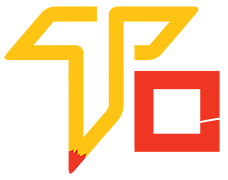Who this backend development course?
The backend development course teaches learners how to build and manage the server-side of websites and applications, handling databases, APIs, and server logic for efficient and dynamic functionality.
Why take this backend development course?
Taking a backend development course provides essential skills for creating robust and scalable web applications, enabling you to handle data, security, and server-side logic effectively, and making you a valuable asset to tech teams.
What you will learn in backend development?
In a backend development course, you will learn:
- Server-Side Programming: Understand how to write code that runs on the server, handling requests, processing data, and generating responses.
- Databases: Learn to work with databases, design schemas, and use queries to store and retrieve data efficiently.
- API Development: Create and manage APIs (Application Programming Interfaces) to facilitate communication between different software systems.
- Authentication and Security: Implement user authentication, authorization, and security measures to protect sensitive data.
- Performance Optimization: Learn techniques to optimize server performance, reduce response times, and manage server resources effectively.
- Version Control: Gain proficiency in using version control tools like Git to track changes and collaborate with other developers.
- Frameworks and Libraries: Explore backend frameworks and libraries (e.g., Node.js, Django, Flask) to streamline development and leverage pre-built functionalities.
- Deployment and Hosting: Understand how to deploy applications to servers, manage hosting environments, and ensure scalability and reliability.
- Error Handling and Debugging: Master techniques for identifying, diagnosing, and resolving issues in server-side code.
- RESTful Architecture: Learn the principles of REST (Representational State Transfer) for designing scalable and maintainable APIs.
- Web Security: Acquire knowledge about common web vulnerabilities and best practices for securing your applications.
- Caching and Performance Optimization: Explore caching strategies and performance optimization techniques to enhance the speed and efficiency of your applications.
- Background Processing: Understand how to perform tasks asynchronously and handle background processing, such as sending emails or processing large datasets.
- Testing and Quality Assurance: Discover methods for writing unit tests, integration tests, and ensuring code quality and reliability.
- DevOps Practices: Learn about continuous integration, continuous deployment, and other DevOps practices that facilitate efficient development and deployment workflows
SALARY & PACKAGES
Junior Backend Developer- ₹3,00,000 – ₹6,00,000 per year
Mid-Level Backend Developer- ₹6,00,000 – ₹12,00,000 per year
Senior Backend Developer- ₹12,00,000 – ₹20,00,000+ per year
JOBS & PROFILES
There are many job profiles are avaliable in varanasi & all over India. Such Job Profiles name is – Backend Engineer, Backend Developer, Backend Software Engineer, Backend Software Developer, Server-side Developer, API Developer, etc.

Charges & duration of backend development
Duration : 6 month
Charges : 6,000/-
View all Fee & duration of separate course frontend development, database, PHP.
Backend Development course syllabus details
- Understanding the role of the backend in web development
- Overview of server-side programming languages and frameworks
- Setting up a development environment
- Handling HTTP requests and responses
- Basics of routing and URL handling
- Introduction to databases (SQL and NoSQL)
- Designing database schemas and relationships
- Writing database queries and CRUD operations
- Fundamentals of APIs and RESTful architecture
- Creating API endpoints for data retrieval and manipulation
- Handling different HTTP methods (GET, POST, PUT, DELETE)
- User authentication and authorization mechanisms
- Implementing secure password storage
- Handling and preventing common security vulnerabilities
- Introduction to backend frameworks (e.g., Node.js, Django, Flask)
- Working with middleware for request processing
- Utilizing libraries for common functionalities (e.g., validation, logging)
- Writing unit tests and integration tests
- Debugging techniques and tools
- Test-driven development (TDD) principles
- Caching strategies for improving response times
- Database optimization and query performance
- Load balancing and scaling strategies
- Generating and maintaining API documentation
- Using tools like Swagger and Postman
- Setting up production environments
- Continuous integration and deployment (CI/CD) pipelines
- Monitoring, logging, and error tracking
- Background processing and asynchronous tasks
- WebSockets for real-time communication
- GraphQL and alternative API architectures
- Applying the learned concepts to build a complete backend for a web application
- Deploying the project to a production server
